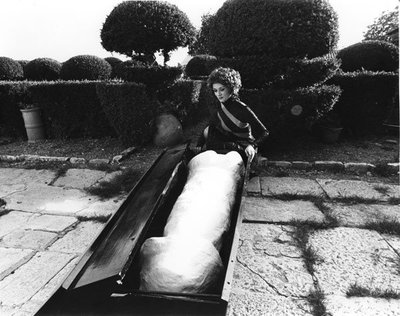Coping Mechanism
The story of many female artists is a story of privilege. That is to not say that all women artists were priviledged, but rather that the ones born into privilege were capable of leveraging more force in the art world. It is irony itself that for Nikki de Saint Phalle, nothing was expected of her. She was one of several children, born into wealth. Her brothers would be groomed to be great individuals, while Saint Phalle's lot in life was to marry someone rich and bear children.
Her rebellion, therefore, was as swift and severe as possible. Marrying someone relatively within her social circle, Harry Matthews, she began pursuing her art. The next few years of her life were marked with having children, traveling europe, and living the burgeois lifestyle she tried to escape.
After an attempted suicide, Saint Phalle was admitted to a hospital, and there she received a letter - one of apology from her father for the decades of sexual abuse he put her through. Saint Phalles pain, turmoil, and suffering was not uncommon, nor was it unique. It was, however, her driving force. Through out her years, she would create many art works in an attempt to express her pain and suffering, but to also help her cope with them - starting in that hospital.
One of her earlier examples, in 1961, that shocked her critics was Les Tirs, a semi-interactive art exhibit wherein she would paint various things, and she would hide paint within these paintings. A rifle round later, and her previously blank canvas would be colorful. She was shooting herself, the paint her pain and suffering, the bullet was her brush.
As a farewell to her father, she created a film entitled Daddy. For 1972, the year the film was made, its strange tones of horror, incest, murder, and rape were unusual to say the least. It was, however, a tribute to her father and what he did to her. The imagery used in this film is very literal at times - her fathers funeral shows them lowering a giant phallic object into a coffin.
